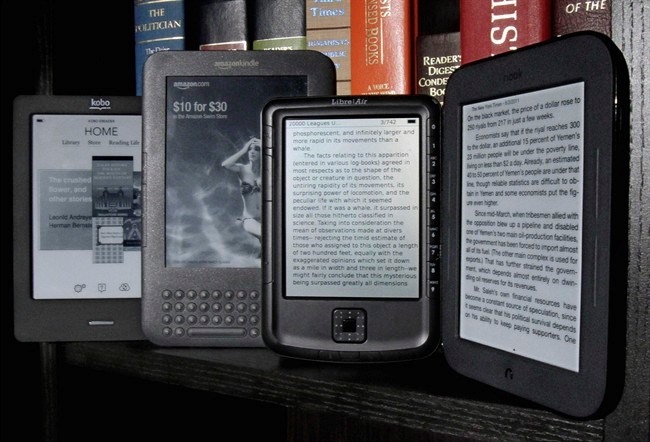TORONTO - In 2012, Douglas & McIntyre filed for bankruptcy protection, Random House of sa���ʴ�ý become the sole owner of McClelland & Stewart, and Penguin and Random House planned a merge.
It's perhaps no surprise that year also saw an explosion in online self-publishing, with a wealth of platforms — including Kobo Writing Life, Amazon Kindle Direct Publishing, and iBooks Author — offering authors an alternate avenue.
"We're actually hearing from a lot of different types of authors, some brand new and some successful ... that have had traditional contracts that are just using self-publishing to experiment with new stuff or put books out that they wanted to do on a different cycle than their traditional publishers were," says Libby Johnson McKee, director of Kindle Direct Publishing.
E. L. James, Amanda Hocking, and J. A. Konrath are but a few writers who've found massive success in self-publishing material online. If you have dreams of being a self-publishing sensation in 2013, here are five tips on how to stand out in an increasingly crowded market:
1. The moment you start writing the book, begin building your marketing platform.
"The hardest thing about self-publishing is marketing, not writing, and people find this out too late," says California-based author Guy Kawasaki, who has self-published two books and explains how to do so in the newly released "APE: Author, Publisher, Entrepreneur — How to Publish Your Book."
"They finish their book and they think: 'Oh, I'll put it on Amazon and boom, people will start buying it,' and they will find that is absolutely not true."
Kawasaki recommends spending two to three hours a day on writing, and one hour a day building a marketing platform on social media sites such as Google Plus, Facebook, Twitter, LinkedIn.
"Network, network, network. And when you're done doing that — network," adds Mark Lefebvre, director of self-publishing and author relations at Kobo. "Getting to know people in the community, getting to know other authors, and understanding the environment that you're playing in is critical."
2. It sounds simple but — write a great book (and know your audience).
"Bad books just don't sell," says Johnson McKee. "And if you write a great book and really work hard on getting your message right, the craft of writing is still the thing that wins the day."
Browse blogs of authors in the same genre, and understand what fans like to read.
"When you talk to an author and you say, 'Who is the audience for your book?' 'Well, everyone. Everyone would love this book. This is the best book ever written. It's the Great American Novel,'" says Lefebvre, who has also written books and published them both in traditional self-published formats.
"If you honestly believe that, I think you really need to go back to the drawing board, because not every book is for everyone."
3. Once the book is written, start crowdsourcing.
Get fans, friends, colleagues and others to copy-edit and/or review the book.
"Do this immediately before it goes on sale, so that as soon as it goes on sale you have a bunch of great reviews for the book," says Kawasaki (he sent "APE" in full format to about 1,000 people before he self-published it, and just three days after it went on sale it had about 135 online reviews).
"Proofreading and editing, though, is a skill and it's something that, just because you write, you might not be able to be the best editor," cautions Johnson McKee.
"So if you can find somebody who has that skill, and it actually is pretty affordable ... I would recommend trying to do that."
The beauty of self-publishing an ebook is you can always edit once it's out there.
4. Lure in readers by putting your work on various sites and devices. And create catchy metadata, which includes the cover, title, description, biography, and price.
"People judge a book a book by its cover, they do, so I would strongly recommend that authors consider using a professional cover designer and investing the time and effort in that," says Lefebvre.
As with an ebook's text, the cover can also be changed once it's out in digital format.
Pricing can be changed too. To figure out the right price point, look at other books in your category. If everyone else is priced at $5.99, value your book at just under that to start.
"I often think that people feel like the 99-cent price point is the only one that's going to help them sell a book," says Johnson McKee. "And I've seen people stay at the 99-cent price point even after the book has taken off, and my suggestion would be to look again and make sure that you are getting the most value for the purchases.
"Go up one or two dollars in your pricing after your book has a bit of a following. You may actually end up selling a few less units but actually making more money overall."
5. Write another great book as soon as possible.
Lefebvre notes that passionate and dedicated readers will whip through a book and immediately check to see if authors have written anything else.
The rule is particularly important for genre writers, adds Johnson McKee.
"Those types of readers are voracious," she says. "I heard some statistic that romance readers can read 10 books a week, and those are people who are just waiting for the next book to come out."



